
Welcome to Revisiting Disney! This week, we’re looking at a Disney movie that is gorgeous and exciting, Treasure Planet! Like always, I have labeled each category, so if you want to skip to the parts that interest you most, feel free. And, of course, if you have any thoughts, burning or otherwise, please share in the comments!
BACKGROUND OF TREASURE PLANET
Released on November 27th, 2002, Treasure Planet took the Studio ten years to make. In 2011, however, it was considered to be Disney’s biggest financial loss; it cost around $180 million to make and only made $101 million, so it lost about $79 million.
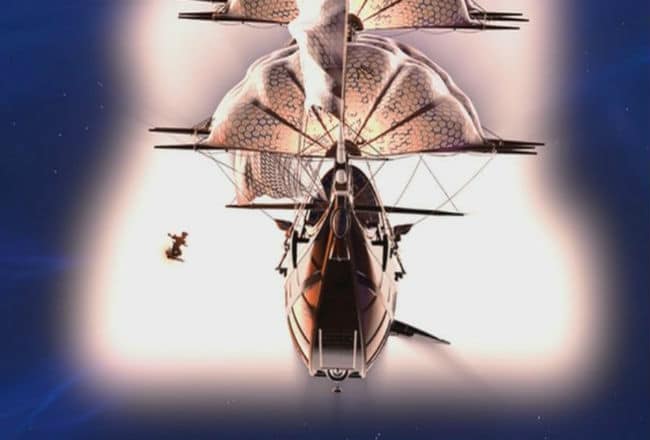
Photo: Disney
Treasure Planet was directed by Ron Clements and John Musker, who, with Rob Edwards, adapted the story from Robert Louis Stevenson’s classic, Treasure Island. Clements and Musker had actually pitched the idea several times to the Studio before they could make it.
The first time they pitched it was in 1985, while they were making The Black Cauldron. However, they were put on The Great Mouse Detective. After The Little Mermaid, they mentioned Treasure Planet to the Studio again but were sent to direct Aladdin. When they were told to make Hercules, they said that they would make it as long as they were allowed to make Treasure Planet next.
According to the commentary, the film design was set up to be seventy percent futuristic, thirty percent the Age of Exploration; the technology being based on the idea of what it could have been if people had developed solar power during that time. This makes it a wonderful steampunk film. I’ll talk about this a bit more in the section titled The 2000’s.

Photo: Disney
As a final background note, this is the film that disproves the IMDB’s claim that Lilo & Stitch and The Princess and the Frog were the only two Disney movies in the first decade of the 2000’s to get critical acclaim (being the only two films to make back their cost of production, fine).
However, in 2002, Treasure Planet was nominated for the Academy Award for Best Animated Feature. Although it lost to Spirited Away (because, duh), it can’t have been a total critical wash to have been nominated! And it’s one of my personal favorites, so there’s that.
MUSIC
The music for Treasure Planet was originally set to be composed by Alan Silvestri, who would leave to work on Lilo and Stitch. This would work out for the best, I think because Lilo & Stitch has such an iconic sound.
James Newton Howard was brought in and created a score that was very similar to that of Atlantis: The Lost Empire and Dinosaur. Howard served as the orchestrator/score producer/composer. Like I said in my review of Atlantis, Howard is known for using multiple chord progressions, lots of key changes, and false cadences (a cadence is the sequence of notes or chords that end a musical piece, so a false cadence is a fake ending, like one the ones in The Return of the King. What? I’m not wrong).
Every score that Howard writes for Disney is epic. It builds when the action does, and Howard is very good at manipulating the emotions of his audience through the score. It’s subtle but works wonderfully. He knows when to build it, and when to get the melody just wash over the listener. Treasure Planet is another of my favorite Disney scores.
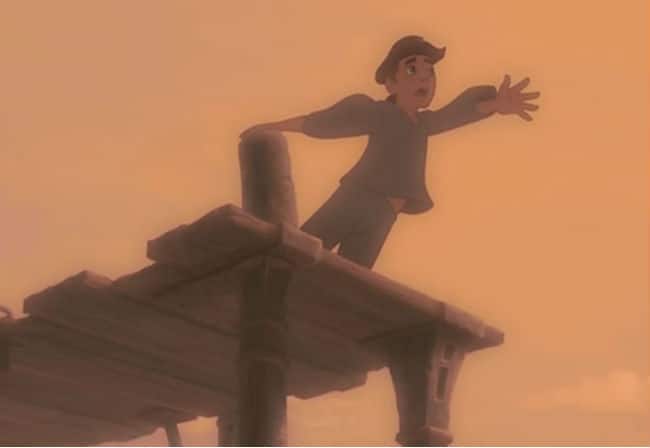
Photo: Disney
Johnny Rzeznik, a member of the Goo Goo Dolls, wrote and performed two songs for the film, “Always Know Where You Are,” and “I’m Still Here, (Jim’s Theme).” These songs are wonderful. “I’m Still Here” is used in the movie to show Jim and Silver’s bonding on the ship, as well to let us see flashbacks from Jim’s past as he learns and grows. It works well and fits into the overall musical theme of the film.
ANIMATION
The animation for Treasure Planet is stunning. The film uses a mixture of traditionally hand-drawn and CGI work, plus the “Deep Canvas” process. In Treasure Planet, the humans and most of the main characters are traditionally drawn, while the technological parts, like B.E.N. and the mechanical parts of John Silver, were done with what is called flat-rendered CGI.
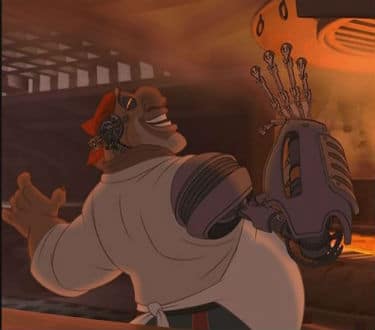
Photo: Disney
When it came time to add the flat-rendered CGI to John Silver, the animation team talks about how they used established and classic animation to see how the two could be grafted together. In the end, they used footage of Captain Hook from Peter Pan to test the process of adding the CGI. The process was referred to as “CGI grafts on animated bodies,” and looking at it, it works well.

Photo: Disney
The third type of animation used was Disney’s ‘Deep Canvas’ process, which had been used in Tarzan. Also, the overall look was based on 19th-century oil paintings, though the backgrounds were created digitally. In a couple of scenes, all three animation types are used together. Animation-wise, I think that this time period for Disney was really a very bold and experimental time.
PLOT
The story of Treasure Planet starts with young Jim Hawkins, being raised by a single mom, Sarah, who owns the Bembo Inn (a nice callback to the story). He is very much a James Dean/rebel without a cause, who has a lot of abandonment issues. This, we later learn, stem from his father leaving him and his mother years ago. Jim is always getting in trouble and his mother isn’t sure what to do with him.
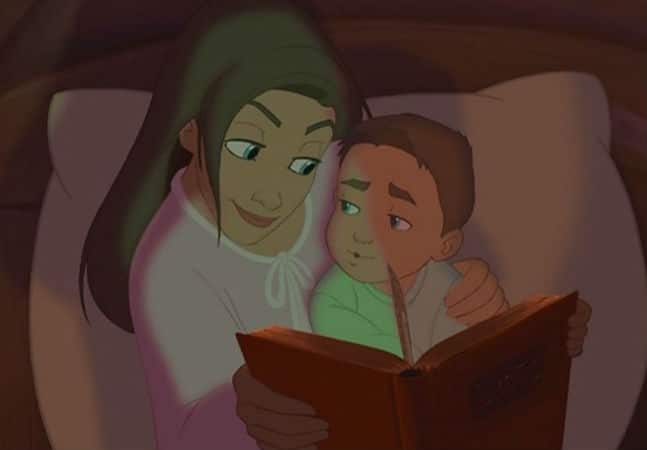
Photo: Disney
When an old pirate, Billy Bones, shows up badly injured at the Inn, Jim tries to help him and, in the process, is given a map. When pirates come after the soon to be deceased Billy, the Inn is destroyed. Jim and his mother make it out safely, thanks to her friend, Dr. Doppler and when they investigate the map, they are surprised to learn something. The map, as it turns out, leads to the fabled Treasure Planet, which holds the loot of 1000 worlds, as plundered and stored by the famous pirate, Captain Flint. Jim and Doppler convince Sarah to let them charter a ship, and the pair head out on an adventure to find Treasure Planet.
They, like in the story, have the steadfast captain and unflappable first-mate, plus the crew that is decidedly pirate-like. The fatherless Jim and the Cook, Long-John-Silver (played by a cyborg), begin to bond as Silver teaches Jim about sailing and becomes a father figure for him.
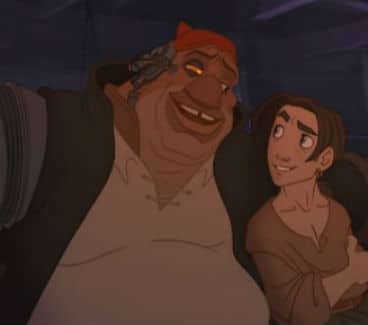
Photo: Disney
However, this is an adaptation of Treasure Island, and the story is about a band of pirates (including their captain, Captain Silver). Eventually, this puts Jim and Silver on opposite sides of the fight for the map and the treasure. As Jim tries to make his mother proud and save his friends, Silver, and his band are also chasing the secret of Treasure Planet.
With the help of B.E.N., who had been left by Captain Flint on the planet, Jim begins to puzzle out the secret and discovers that there is something about Treasure Planet that might lead to their destruction, or save them all. And mixed in with all of that is the father-son dynamic between Silver and Jim, which is just as important to the survival of the group and to both of them.
SOURCE MATERIAL
Treasure Planet is based on the novel Treasure Island, the first book to be published by Robert Louis Stevenson. Published in book form in 1883 and in serial form in 1881, it is one of those books that I have never read (to my shame. It’s on the list).
Stevenson was born in 1850 and would die in 1894 of a cerebral hemorrhage, but would write Treasure Island, Kidnapped, The Master of Ballantrae, A Child’s Garden of Verses, and The Strange Case of Dr. Jekyll and Mr. Hyde (one of my favorite books ever). The man was good, and he was writing at a time when literature for kids was becoming something that was done more often. Treasure Island was written for Stevenson’s stepson and the new children’s book genre, plus the growing popularity of the serial novel meant that more people were reading.
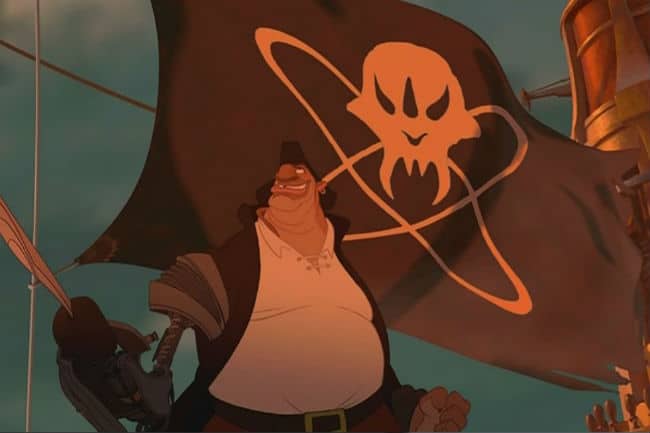
Photo: Disney
The story has been adapted many times on film, and Treasure Planet itself is the third adaptation of the story to be done by the Disney Company. Treasure Island was made by Disney in 1950. Bobby Driscoll, Robert Newton, and Basil Sydney all star in the film, and this was Walt Disney’s first live action movie.
The second Treasure Island adaptation that Disney had part of was Muppet Treasure Island. If you haven’t seen this, with Tim Curry as Silver, Kermit the Frog as Captain Smollett, and Miss Piggy as Bengimina Gunn, it’s worth a watch.
The 2000’s
Steampunk is defined as “a genre of science fiction that typically features steam-powered machinery rather than advanced technology,” although there are other characteristics. It’s basically modern or advanced technology, set in a place that resembles the 1800’s. Typically, steampunk stories either take place in the American West or in the Victorian Era, and I would say that the genre includes shows like The Adventures of Briscoe County, Jr. and Firefly (Firefly looks like the 1800’s, I think, so it counts).

Photo: Disney
Steampunk wasn’t given that name until the 1980’s. The genre also reveres the authors Jules Verne and H.G. Wells, who would have been part of the steampunk movement if it had been around when they were writing.
Treasure Planet was released in 2002, which is interesting because this was the same year that Joss Whedon’s classic series, Firefly, was released on Fox. For a variety of reasons, Firefly was not a success at the time, though it became a cult classic. I blame Fox, and might still be a little bitter about the one season of Firefly. Aren’t we all?
Sorry, back to steampunk. From what I can tell, steampunk began to pick up steam as part of the mainstream culture around 2010; that’s the date that I found the most articles written about why steampunk has become so popular.
It seems like there were a couple of great things, like Treasure Planet (and Firefly), that were just made too early. If Treasure Planet had been made later in the century, it probably would have been more popular. Despite that, like I said, it’s become a bit of a cult classic.
LESSONS LEARNED
The first lesson is that you have to charter your own course, though sometimes, you have to fight to make your dreams come true. Jim had a really rough life, and in the end, he was able to rise above it all and become what he had always dreamed of being.
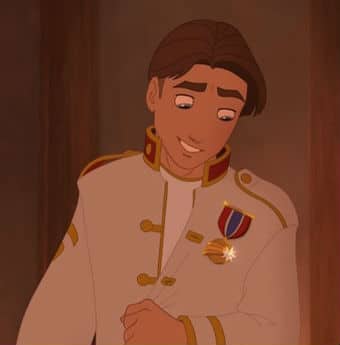
Photo: Disney
Secondly, another lesson is that you never know how you’ve affected someone until later on. Silver didn’t realize how much he’d come to see Jim as a son until later in the film, and he didn’t realize how much Jim looked to him as a father at first either.
Thirdly, greed can take over and consume you. The pirates were so consumed with getting their treasure that they didn’t care about anything else, and Silver was so consumed with this goal that he gave up his leg and his arm (though he later sacrificed that dream to save Jim). I guess that ties into the second lesson, Jim didn’t know how much he meant to Silver.
DOES IT HOLD UP?
Even though Treasure Planet has become a bit of a cult classic today, with stunning animation, effects, and a great twist on a classic story, it wasn’t as big of a hit when it came out in 2002. However, it falls into the category of things that seem to have been created too early to be appreciated in its day. The style of the animation, the music, the story…it all works together to create an exciting action/adventure story, based on a classic adventure story, but with a steampunk twist.
For next week: Brother Bear
If you enjoyed this post and the others in the Revisiting Disney series, and have found yourself wishing that you could find them all in one convenient and bound book with eight extra essays, there is an option for you! Check out A Journey Through Disney: My Look Back Through Disney Canon, now available on Amazon as both a Kindle book ($4.99) and a paperback ($11.99).
OTHER SOURCES:
https://thewaltdisneycompany.com/about-disney/disney-history
http://www.imdb.com
http://studioservices.go.com/disneystudios/history.html
http://www.tor.com/2013/01/24/steampunk-hits-the-mainstream-again/
http://www.huffingtonpost.com/desirina-boskovich/why-steampunk_b_6053796.html
http://www.thepeoplehistory.com
Bailey, Adrian. Walt Disney’s World of Fantasy. Everest House Publishers. New York, New York. 1982.
Finch, Christopher. The Art of Walt Disney: From Mickey Mouse to the Magic Kingdom. Harry N. Abrams, Inc. New York, New York. 1975.
Johnston, Ollie and Frank Thomas. The Disney Villain. Hyperion. New York, New York. 1993.
Thomas, Bob. Disney’s Art of Animation From Mickey Mouse to Hercules. Hyperion. New York, New York. 1992.
ARE YOU A ROMANCE FAN? FOLLOW THE SILVER PETTICOAT REVIEW:
 Our romance-themed entertainment site is on a mission to help you find the best period dramas, romance movies, TV shows, and books. Other topics include Jane Austen, Classic Hollywood, TV Couples, Fairy Tales, Romantic Living, Romanticism, and more. We’re damsels not in distress fighting for the all-new optimistic Romantic Revolution. Join us and subscribe. For more information, see our About, Old-Fashioned Romance 101, Modern Romanticism 101, and Romantic Living 101.
Our romance-themed entertainment site is on a mission to help you find the best period dramas, romance movies, TV shows, and books. Other topics include Jane Austen, Classic Hollywood, TV Couples, Fairy Tales, Romantic Living, Romanticism, and more. We’re damsels not in distress fighting for the all-new optimistic Romantic Revolution. Join us and subscribe. For more information, see our About, Old-Fashioned Romance 101, Modern Romanticism 101, and Romantic Living 101.

Aww I love this movie so much!! So sad that it failed so badly at the box office. I feel like a lot of people don’t know even about the movie, which is too bad because it really is a wonderful retelling. I also loved that you called it steampunk – I didn’t even think about that, but it definitely is. There really aren’t a lot of “steampunk” films out there, so I would say this is one of the better steampunk movies. 😀
I agree, Faith, it’s such a great film that really is very underrated. Honestly, I think it was just made a few years too early. I would love to see more steampunk films, there are so many interesting artistic choices that can be made! Thanks for commenting!
Please sign this:https://www.change.org/p/the-walt-disney-company-to-get-disney-to-finally-give-treasure-planet-the-respect-and-attention-that-it-deserves